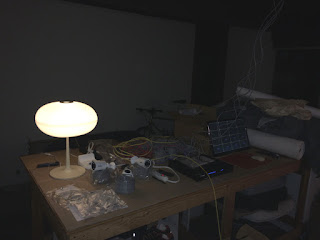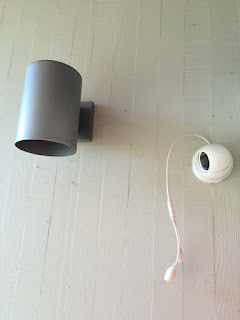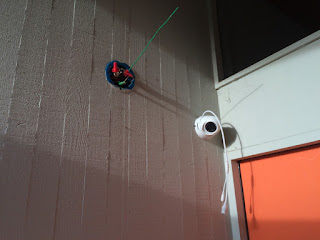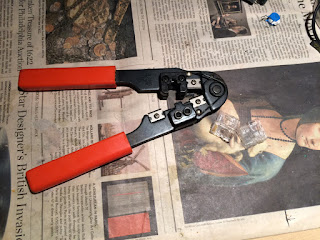I have been evaluating this NVR security camera system for 10 days now. While I jumped from the initial cash outlay of $250 to $1000 I have no disillusions that this is nothing like the systems used in commercial applications. Then there is law enforcement equipment that a camera alone cost a few thousand dollars. I think I have a well informed level of expectation of what to expect. I am very glad that I opted to spend a bit more. The network based NVR is the way to go for the ease of camera installation if you want to maintain unobtrusive professional installation.
I have been conducting a lot of tests to be sure this is a system that I can live with. The most important aspects of the tests is to find out any design defects of both hardware and software, and how well the system responds to events such as interruptions due to power lost, network disruptions, and incremental deterioration of the NVR processing as inherent to complex microprocessor systems from memory loss, disk fragmentation, and process thrashing. I set out with a health level of skepticism as I view this is just another consumer electronics. I conducted a fairly substantial detail volley of tests. I discovered a few security concerns, evidently that is compromised for the ease of use and to minimized service calls. One of my cameras ceased to be accessible by the NVR, which I later concluded it had fallen victim to hacking. I would not go into the specifics, but I would just say it was due to the easy to guess administrator's user name and password. The NVR relies on this default user name and password to automatically search, add, and configure a new camera into the NVR system to make it easy for the non-technical consumers.
With a bit of work and a lot of testing, I was able to plug this security hole without compromising the plug-and-play automatic restoration of the camera topology - in the event of power, network, and periodic scheduled rebooting of the NVR.
I am quite happy with my purchase choice. This NVR has a lot of front panel status indicators as well as controls making review of recorded events easier. One can also see if one of the network cameras goes off line from the indicators.
Once I was quite certain that I plan to keep this system, I went ahead and order a pan and tilt camera. I wanted to test the software support of the PTZ cameras.
this camera has pan and tilt, but no optical zoom - I am quite impressed with the construction quality; it comes with this die-cast wall mount
my quick rigging to test out the P&T camera - this camera has a Sony Exmor imaging sensor and built-in microphone
to test the night vision I decided to temporarily installed it at the front of the house so I can compare it against the other cameras that are bundled in the NVR system
there are many choice of aggregate views - 1, 4, 8, 9, 16 cameras and countless permutations of to reorganize the sequence of the cameras
one of may remote client apps - this one is for Mac
remote client app for iPad
configurable notification to remote smartphone client
by yesterday I decided to keep the system so I proceed to start the permanent installation of the cameras; this is one of my many outdoor camera installations
I purchased this no-name 8-port PoE gigabit Ethernet switch that costs half of the name brands. It worked as I expected and the best part it requires no external power adapter. It even comes with rack mounting brackets.
here is only a small rat nest of network wiring of 6 Ethernet camera cables for my evaluation
this mess is just a temporary bench tests that I am performing to thoroughly evaluate this system to ensure there is no show stopper that I deem unacceptable
not quite this many Ethernet spaghetti like this server room
the installation of a dome camera for the front door - no more answering the unsolicited marketing cold calls
no new hole is my plan; I carefully plan out the location of this camera
I rigged up this 6-foot dummy for checking the ideal placement of the camera
here I am feeding the Ethernet cable for the IP camera utilizing the existing utility box cutout to avoid drill new hole into the vintage roughsawn cedar sidings
RJ45 connector crimper that I would use to tailor the CAT5e cables during the installations; my friends tease me that I have every tools known to men and I managed to find nearly enough of unused RJ45 plugs left over from a decade ago
one unobtrusive professional installation
pan seared scallops and mahi mahi with wasabi sauce
served with rice noodles with slivers of braised pig stomach and shiitake mushroom
Fortune is smiling at me. When I renovate the kitchen of this house I have the foresight to provision a CAT5e cable along the kitchen to where I now plan to place the NVR. This Ethernet cable serves as the network link between two ends of the house significantly reducing the need to route many cables between the cameras and the NVR.
This is the topology of the network that I am using. The PoE switch serves as the service hub for many cameras located on the opposite end of the house from where the NVR is located.
the CAT5e cable that I provisioned when I renovated the kitchen many years ago
today I just have to install the RJ45 receptacle on one end and a RJ45 plug on another
my house have vintage wood wall panels so each hole drilled would only be taken with careful deliberation and planning
here I utilized an existing cable run to bring in an Ethernet cable
I used the existing cable to pull the Ethernet cable through
this is a surface mount Ethernet jack
by crimping my own RJ45 connectors I can tailor the Ethernet lengths to perfection
If you are considering of purchasing one of these systems, there is only one way to find out how well your selection functions. It is to buy one from a vendor that you can easily return for a full refund. There is no substitute for playing it first hand and find out all the pros and cons. No system is perfect and you get what you pay for. The design and stability of the software and firmware are some of the most important considerations. For remote access, you should also consider the vendor's long term free support of DDNS or equivalent systems unless you have your own fixed internet IP address.































No comments:
Post a Comment